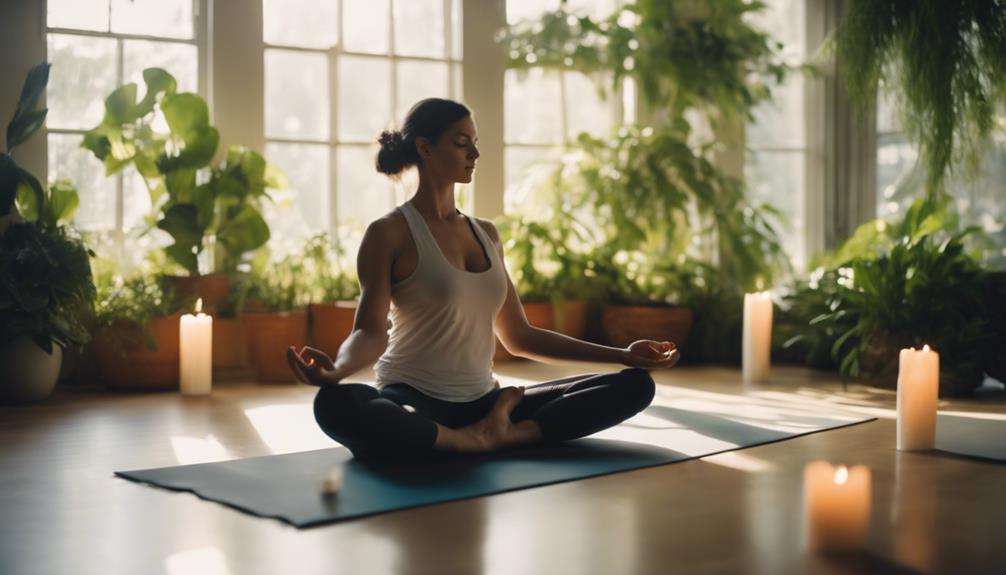Who Founded Yoga

Yoga is a practice that has transcended time and geography, evolving into a global phenomenon embraced by millions. But who founded yoga? Understanding the origins of this ancient discipline is essential for anyone looking to deepen their practice or simply appreciate its rich history. In this blog post, we will explore the roots of yoga, its historical figures, and how its foundational principles continue to influence modern practice.
Understanding the Ancient Roots of Yoga
The origins of yoga can be traced back over 5,000 years to the Indus Valley civilization in ancient India. The term “yoga” comes from the Sanskrit word “yuj,” which means to unite or join. This signifies the union of body, mind, and spirit, a core concept that remains central to yoga practice today. The earliest references to yoga can be found in the sacred texts of the Vedas, which are among the oldest scriptures in human history. These texts contain hymns, rituals, and philosophical insights that laid the groundwork for the spiritual and physical practices we associate with yoga today.
The Influence of the Vedic Period
During the Vedic period, yoga was primarily a meditative practice aimed at spiritual awakening and self-realization. The Vedas introduced concepts such as meditation (dhyana) and contemplation (upasana), which formed the basis for later yoga philosophies. The Upanishads, philosophical texts that emerged later, further expounded on these ideas, exploring the nature of existence and the self. It is during this time that the foundational beliefs of yoga began to take shape, emphasizing the importance of inner peace, mindfulness, and the pursuit of knowledge.
Who Were the Pioneers of Yoga?
While the origins of yoga can be attributed to ancient Indian culture, it is essential to recognize that no single individual “founded” yoga. Instead, it evolved over centuries through contributions from various sages and philosophers. One of the most notable figures in this evolution is Patanjali, a sage who is often credited with compiling the Yoga Sutras, a foundational text that outlines the philosophy and practice of yoga. Written around the 2nd century BCE, the Yoga Sutras consist of 196 aphorisms that provide guidance on ethical conduct, meditation, and the path to enlightenment.
Yoga in the Pre-Classical and Classical Periods
As yoga evolved, it transitioned into the pre-classical and classical periods, where various schools of thought emerged. The Bhagavad Gita, a sacred Hindu text, is another essential work that discusses yoga in the context of duty (dharma) and devotion (bhakti). This text highlights different paths of yoga, including karma yoga (the yoga of action) and jnana yoga (the yoga of knowledge). The classical period saw the formalization of different yoga styles, each with its unique approach to achieving self-realization and spiritual growth.
The Development of Hatha Yoga
Hatha yoga, a physical branch of yoga that focuses on postures (asanas) and breath control (pranayama), began to gain prominence during the medieval period. Texts such as the Hatha Yoga Pradipika, written in the 15th century by Swatmarama, played a crucial role in codifying the practices of hatha yoga. This period marked a shift towards the physical aspects of yoga, making it more accessible to practitioners and emphasizing the importance of physical health in conjunction with spiritual development.
Modern Yoga: A Global Phenomenon
The 19th and 20th centuries witnessed a significant transformation in the practice of yoga as it began to spread beyond India. Pioneers like Swami Vivekananda and Maharishi Mahesh Yogi introduced yoga to the Western world, framing it as a holistic approach to well-being. This exposure led to the creation of various styles, including Iyengar, Ashtanga, and Kundalini yoga. Today, yoga studios can be found in cities across the globe, and millions practice yoga for its numerous benefits, including stress relief, improved flexibility, and enhanced mental clarity.
Understanding the Many Styles of Yoga
With the rise of modern yoga came the diversification of styles, each tailored to different needs and goals. From the gentle movements of Yin yoga to the vigorous flows of Vinyasa, there’s a style for everyone. While the foundational principles remain consistent, these variations allow practitioners to explore yoga’s physical and spiritual dimensions in ways that resonate with them personally. Understanding these styles can enhance your practice and help you connect more deeply with the ancient roots of yoga.
Conclusion: The Ever-Evolving Nature of Yoga
In conclusion, while it is challenging to pinpoint a single founder of yoga, it is clear that this ancient practice has been shaped by countless individuals and traditions throughout history. From the Vedic sages to modern-day practitioners, yoga represents an ongoing journey towards self-discovery and enlightenment. As you engage with yoga, remember its rich heritage and the diverse influences that have contributed to its evolution. Embracing yoga not only enriches your own life but also connects you to a global community dedicated to well-being, mindfulness, and spiritual growth.
By understanding the historical context of yoga and its foundational figures, practitioners can appreciate the depth and significance of their practice. So, whether you’re a seasoned yogi or a curious newcomer, exploring the question of who founded yoga offers valuable insights into the transformative power of this ancient discipline.What Is The Best Thickness Yoga MatWhat Is A Sun Salute In YogaWhat Is The Best Thick Yoga Mat